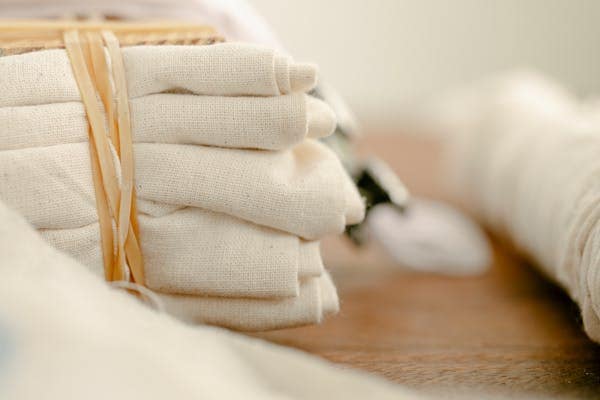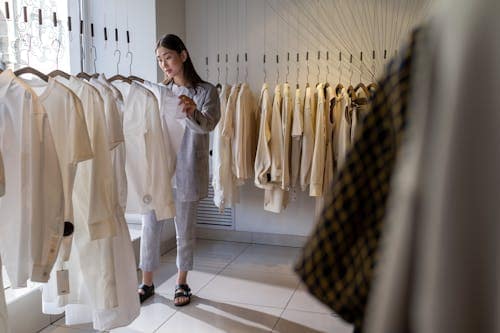I. Introduction
Natural Fiber in Clothing is leading a powerful shift toward sustainable living by offering eco-friendly alternatives that are healthier for you and the planet. From clothing and home goods to everyday essentials, natural fiber products combine style, comfort, and environmental responsibility. This guide will help you explore the best natural fiber options, understand their benefits, and make informed choices with confidence.
II. What Are Natural Fiber in Clothing? A Deep Dive into the Eco-Friendly Difference
Natural fibers are materials obtained from plants or animals, used to make textiles and household items. Unlike petroleum-based synthetic fabrics, they are biodegradable, breathable, and renewable.
A. Types of Natural Fibers:
| Animal-Based Fabrics | |
|---|---|
Cotton | Wool (sheep) |
Linen (flax) | Alpaca |
Hemp | Silk (silkworms) |
Jute | Cashmere (goats) |
B. There are two main types of natural fibers:
1. Plant-based fabrics
These fibers are extracted from seeds, stalks, or leaves and are especially popular for their lightweight, breathable, and moisture-wicking qualities.
2. Animal-based fabrics
These fibers are prized for their warmth, softness, and luxurious feel.
C. Key Differences from Synthetics
- Natural fibers decompose naturally and are often grown with fewer chemicals.
- Synthetic fabrics such as polyester and nylon are made using fossil fuels and release microplastics.
D. Why It Matters
Choosing natural fibers is not just about what you wear or use. It is about supporting healthier ecosystems, reducing pollution, and making choices that benefit your skin, your wardrobe, and the world around you.
III. The Health & Comfort Benefits: Why Your Body Craves Natural Fabrics
When it comes to what you wear, your body naturally prefers comfort and safety, which is exactly what natural fabrics provide.
People are becoming aware of how chemical-free textiles can protect them from unnecessary exposure to harmful substances. Synthetic fabrics are often treated with dyes, flame retardants, wrinkle-resistant agents, and other chemicals that can linger in the fabric and leach into your skin.
In contrast, hypoallergenic clothing made from natural fibers is typically free from these harsh treatments, especially when labeled organic or untreated.
A. Top Health Benefits:
- Hypoallergenic: Ideal for sensitive skin, eczema, and allergies.
- Chemical-Free: Fewer toxins than synthetics, especially when labeled organic.
B. Comfort Advantages:
- Breathability: Allows airflow and regulates body temperature.
- Moisture-Wicking: Keeps you dry and odor-free.
C. Best Choices for Sensitive Skin:
- Organic cotton
- Linen
- Hemp
- Bamboo (mechanically processed)
Whether you are active, lounging, or sleeping, natural fabrics offer the softness and breathability your body craves. By choosing natural clothing, you are not only investing in comfort but also making a healthier choice for your skin and overall well-being.
IV. Top Natural Fibers Explained
Understanding the unique qualities of each natural fiber helps you choose materials that best fit your lifestyle, values, and comfort preferences. We will walk through the most popular natural fabrics and their properties, so you can make smarter, more sustainable choices.
A. Top Natural Fibers Explained
Fiber | Benefits | Ideal For |
Cotton | Soft, breathable, hypoallergenic | Everyday wear, bedding |
Linen | Moisture-wicking, antibacterial | Summer clothing, home textiles |
Hemp | Durable, eco-friendly | Apparel, bags, upholstery |
Wool | Insulating, moisture-regulating | Cold weather, activewear |
Silk | Luxurious, temperature-regulating | Sleepwear, scarves, bedding |
Bamboo | Silky, antibacterial | Undergarments, activewear |
Tencel | Soft, low water use | Shirts, eco-fashion |
B. Key Comparison:
- Tencel vs. Cotton: Tencel uses less water and is produced in a closed-loop system.
By learning the unique properties of each fiber, you can better match your clothing and home textiles to your needs, whether that means choosing lightweight comfort, natural insulation, or a lower environmental footprint.

linen clothes
V. Beyond the Price Tag: Investing in Natural Fibers for Long-Term Value
One of the most common questions people ask is, Are natural fibers expensive? At first glance, the price of natural fiber products may seem higher compared to fast fashion or synthetic alternatives. However, when you look into the cost-benefit of natural fibers, the long-term value becomes clear.
A. Common Misconception: Natural fibers are expensive.
1. The Truth:
- Durability: Natural fabrics last longer with proper care.
- Fewer Replacements: Less wear and tear mean lower lifetime cost.
2. Smart Shopping Tips:
- Buy fewer, better-quality pieces.
- Look for sales, secondhand shops, and ethical brands.
Choosing quality over quantity and building a wardrobe with versatile, well-made pieces can actually save you money in the long run. By shifting your mindset from short-term prices to long-term value, you can see that investing in natural fibers supports not only your health and the environment but also your budget.
B. Caring for Your Natural Wardrobe
One of the biggest hesitations people have about switching to natural clothing is the belief that it is difficult to maintain. In reality, caring for natural fabrics can be simple and rewarding once you know a few practical tips.
With the right approach, you can keep your clothes looking beautiful, feeling comfortable, and lasting for years.
1. Washing Tips:
- Use cold or lukewarm water.
- Choose a mild, biodegradable detergent.
- Turn items inside out.
2. Fabric-Specific Care:
Fabric | Care Tips |
Linen | Air dry, steam when damp |
Wool | Hand wash, lay flat to dry |
Cotton/Hemp | Gentle cycle, avoid high heat |
3. Eco-Friendly Laundry Tips:
- Wash full loads.
- Use laundry bags.
- Skip synthetic fabric softeners.
One of the most common concerns is preventing shrinkage in natural fibers. Always check care labels, avoid high heat, and use air drying or low-temperature settings.
When in doubt, hand washing is the safest method. Choosing a plant-based detergent and drying clothes outdoors when possible, further supports your natural lifestyle.
Taking care of your natural wardrobe does not have to be complicated. With a few mindful habits, you can enjoy the comfort, beauty, and longevity of your favorite natural fiber pieces without the stress.
VI. Decoding Sustainability: How to Spot Truly Eco-Friendly Natural Fabrics
With the rise of eco-conscious shopping, many brands now market themselves as “green,” but not all claims are created equal. To truly support the planet and make responsible choices, it is important to understand what sets sustainable natural fabrics apart from those marketed as eco-friendly.
Looking beyond labels and knowing what to watch for can help you avoid greenwashing and ensure your purchases align with your values.
A. Check for Certifications:
- GOTS: Global Organic Textile Standard
- OEKO-TEX: Free from harmful substances
B. Ethical Shopping Tips:
- Support brands with transparent supply chains.
- Look for closed-loop or water-saving production methods.
C. Watch for Greenwashing:
- Read labels carefully.
- Ask questions and do your research.
Choosing sustainable natural fabrics is about more than just the fiber itself; it is about how that fiber was grown, processed, and turned into the clothing you wear.
By understanding certifications, ethical practices, and environmental impact, you can choose fabrics that truly support a more sustainable future.
VIII. The Future of Fabrics: Innovations in Natural Fiber Technology
As the demand for eco-conscious fashion continues to grow, so does the interest in new natural fiber technologies that are reshaping the future of textiles.
Consumers today are not just looking for sustainable choices; they want to support progress and innovation that goes beyond the basics. Thankfully, science and sustainability are coming together to create innovative, sustainable fabrics that are better for people and the planet.
A. Emerging Trends:
- Bio-Based Textiles: Made from agricultural waste, algae, pineapple leaves (e.g., Piñatex)
- Circular Fashion Materials: Designed for reuse, recycling, or composting
- Textile Recycling: New technologies recover and reuse natural fibers like cotton and wool
B. Benefits of Innovation:
- Lower waste
- Closed-loop production
- Fewer chemicals and better performance
As technology evolves, the line between sustainability and innovation becomes beautifully blurred. With innovative sustainable fabrics leading the way, we are entering a future where comfort, style, and environmental responsibility can all coexist.
By staying informed and supporting brands that embrace these advancements, you become part of the movement shaping the next generation of truly sustainable fashion.

Cotton Clothes
IX. Making the Switch: Step-by-Step Guide to a Natural Fiber Wardrobe
If you are wondering how to start choosing natural fibers, you are already taking the first step. Awareness is toward more conscious and sustainable living. Transitioning your wardrobe does not have to be overwhelming or expensive.
With a little planning and intention, you can build a sustainable wardrobe that supports your values, feels good to wear, and lasts for years.
Step 1: Evaluate Your Current Closet
- Identify existing natural fiber items
- Replace synthetics as they wear out
Step 2: Shop Smart
- Read labels
- Choose ethical, conscious consumer clothing brands
Step 3: Take the Natural Fiber Challenge
- Commit to buying only natural fabrics for 30 days
- Replace one synthetic item each week
Bonus Tips:
- Buy secondhand or from local artisans
- Focus on basics first: underwear, tees, sleepwear
The shift to natural fibers is not just about changing your clothes; it is about changing your mindset. By making thoughtful choices, you reduce your environmental impact, protect your health, and support better practices across the fashion industry. Your wardrobe becomes not only more sustainable but also more aligned with who you are and what you care about.
You should try my free 30-Day Natural ingredient Swap Challenge. It is for beginners, and it will help you create a habit of choosing natural ingredients in all we eat and use in everyday living.
X. Conclusion: Embracing Natural Fiber in Clothing for a Healthier, More Sustainable Lifestyle
Choosing natural fiber in clothing is more than just a fashion decision, it is a meaningful step toward living in harmony with your health, your values, and the environment. From understanding the benefits of different fabrics to learning how to care for them and make thoughtful purchases, you now have the tools to make confident and informed choices.
As you begin or continue your journey, remember that every small step counts. Whether you swap one synthetic item for a natural alternative or completely revamp your wardrobe over time, you are contributing to a cleaner, more conscious world. Embrace the beauty, comfort, and integrity of natural fibers and enjoy a lifestyle that feels as good as it looks.

 Simple. Natural. Better.
Simple. Natural. Better.